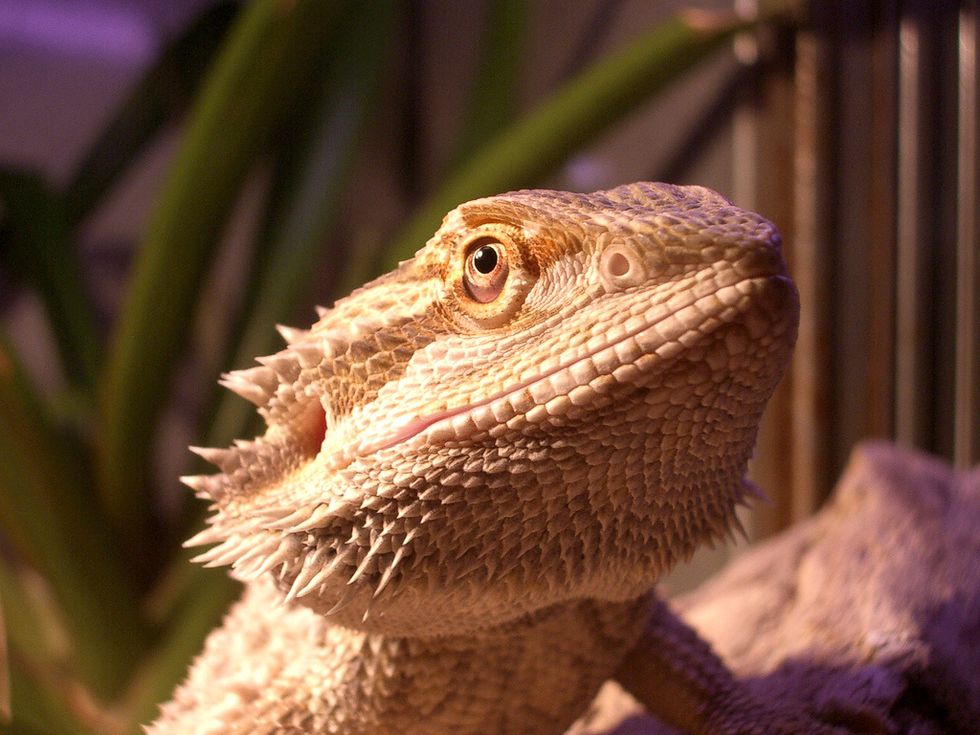It's no secret that frogs and snakes aren't very well liked. You've probably heard stories of your mother screaming because a toad jumped in front of her or your grandmother chopping off a snake's head with a shovel. But many of these fears are unfounded. Reptiles and amphibians are very unlikely to do you any harm unless you antagonize them. Next time your uncle talks about the snake that lunged for him, ask him if he was trying to take a selfie with it.
In any case, these poor animals are underrated as pets. Here's just five that will surely have you smiling instead of crying at these amazing creatures.
1. Bearded Dragons

Bearded dragons are essentially the perfect pet reptile. Originally from Australia, they have been in a successful captive breeding program and are completely domesticated, so they're about as likely to attack you as a golden retriever. Bearded dragons don't get very large and are very easy to care for. They rarely required humidity unless they are in shed, in which case they should be allowed to soak in water and left alone, because reptiles in shed are vulnerable and on guard. Bearded dragons love to be cuddled with and are fairly intelligent and adorably curious. They are most commonly fed crickets, but aren't too picky with what they eat, willing to eat fruit and vegetables if offered. Bearded dragons are in short, probably the easiest reptile to care for.
2. Corn Snake
No, they don't eat corn. Corn snakes live all over North America, getting their name from their wild tendency to hang around corn fields and eat mice that attempted to eat the crops. Thanks buddy! Corn snakes are beautiful, very small snakes that rarely get bigger than a person's forearm. While yes, they eat mice, snakes rarely need to eat and only need to be fed about once a week. One frozen mouse offered from your handy dandy tongs is more than enough to satisfy them. Corn snakes don't mind being handled, and seem to enjoy weaving between their owner's fingers. During shed they should be left alone and not given food, because their eyesight becomes very bad during this period and they can be startled easily. Even when a corn snake lunges, they very rarely actually bite, often bluffing. Even then, their teeth don't always break the skin, and they are non-venomous.
3. Red Eyed Tree Frogs
Okay, okay. This one is likely the hardest on the list. Between the humidity needed, the food, the space and the type of environment they need, red-eyed tree frogs are by no means a hassle, but they require a bit more attention. But look at these guys! Isn't it worth it?! These frogs can't be handled often due to the oils in human skin being harmful to them, so try to limit contact to only when it's really necessary. Be sure to wash your hands before and after handling the frog. They eat crickets and earthworms, but don't catch any wild because these wild animals could contain pesticides or other chemicals.
4. Leopard Geckos
Similarly to the bearded dragon, leopard geckos are easy to care for. The only thing that keeps them from this is misinformation. Pet stores give out a lot of misinformation, from that they can live in plain sand to they don't need humidity. Most geckos need to be fed by tongs and can't hunt the crickets in their enclosure. They also need a heater that lies underneath the cage, and a humid hide. They also need a varied diet. Despite this, if you care for them correctly, they are very rewarding pets.
5. Axolotl
Axolotls are an uncommon pet amphibian, mostly because people have never heard of them! They are fascinating creatures who don't need much attention. They need don't need a large tank, but they also aren't social animals. They either need a slow filtration system or no filter with frequent water changes. Be sure sure to avoid direct sunlight, and limit handling this animal.















